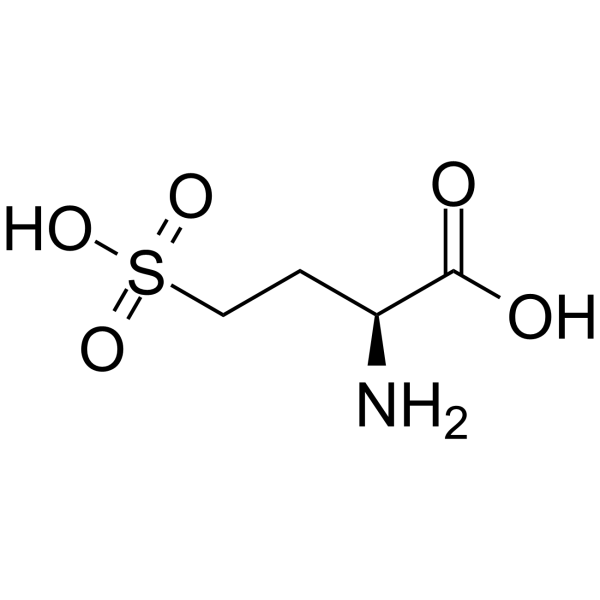L-Homocysteic acid (Synonyms: L-HCA) |
| Katalog-Nr.GC66843 |
L-Homocysteinsäure (L-HCA) ist eine endogene exzitatorische Aminosäure, die als NMDA-Rezeptoragonist wirkt (EC50: 14 μM). L-Homocysteinsäure ist neurotoxisch und kann in der Erforschung neurologischer Störungen verwendet werden.
Products are for research use only. Not for human use. We do not sell to patients.

Cas No.: 14857-77-3
Sample solution is provided at 25 µL, 10mM.
L-Homocysteic acid (L-HCA) is an endogenous excitatory amino acid that acts as a NMDA receptor agonist (EC50: 14 μM). L-Homocysteic acid is neurotoxic, and can be used in the research of neurological disorders[1][2][3].
L-Homocysteic acid activates NMDA receptor with an EC50 value of 14 μM[1].
L-Homocysteic acid (100 μM) induces large currents (1.8 nA) that is insensitive to the NMDA receptor-antagonist mixture in Purkinje cells[1].
L-Homocysteic acid (250 μM, 30 min) potently induces an acute excitotoxic reaction in ex vivo chick embryo retina[2].
L-Homocysteic acid (0-2 mM, 48 h) induces a concentration-dependent neurotoxic effect in rat primary neurons[3].
L-Homocysteic acid (intraperitoneal injection, 4-11 mmol/kg) elicits seizures in rats during early postnatal development[4].
L-Homocysteic acid (intraperitoneal injection, 100-1500 mg/kg) partially substitutes for NMDA, producing maximum values of 61-67% NMDA-lever responding at doses of 1000 and 560 mg/kg, respectively in Sprague-Dawley rats[5].
| Animal Model: | Male albino rats of the Wistar strain[4] |
| Dosage: | 4, 5.5, 8, 11 mM/kg |
| Administration: | Intraperitoneal injection, daily for 14 days |
| Result: | Induced flexion seizures at 4 mmol/kg. Led to intense tail flicking, pivoting, and locomotion. Decreased ECoG (electrocorticograms) activity for 5-9 min. |
[1]. M Yuzaki, et al. Characterization of L-homocysteate-induced currents in Purkinje cells from wild-type and NMDA receptor knockout mice. J Neurophysiol . 1999 Nov;82(5):2820-6.
[2]. J W Olney, et al. L-homocysteic acid: an endogenous excitotoxic ligand of the NMDA receptor. Brain Res Bull. 1987 Nov;19(5):597-602.
[3]. B Lockhart, et al. Inhibition of L-homocysteic acid and buthionine sulphoximine-mediated neurotoxicity in rat embryonic neuronal cultures with alpha-lipoic acid enantiomers. Brain Res. 2000 Feb 14;855(2):292-7.
[4]. P Mares, et al. Convulsant action of D,L-homocysteic acid and its stereoisomers in immature rats.
[5]. Katherine L Nicholson, et al. The discriminative stimulus effects of N-methyl-D-aspartate glycine-site ligands in NMDA antagonist-trained rats. Psychopharmacology (Berl). 2009 Apr;203(2):441-51.
Average Rating: 5 (Based on Reviews and 30 reference(s) in Google Scholar.)
GLPBIO products are for RESEARCH USE ONLY. Please make sure your review or question is research based.
Required fields are marked with *




















